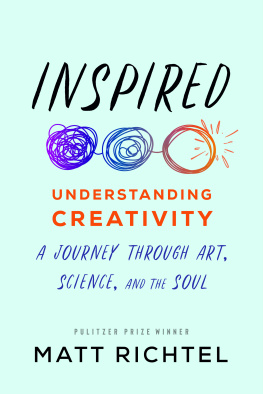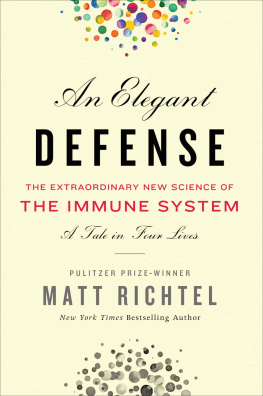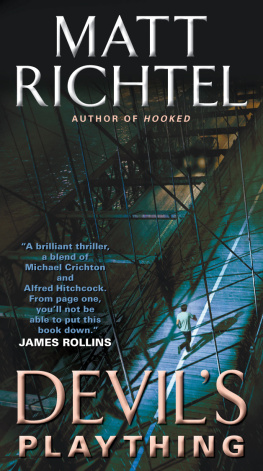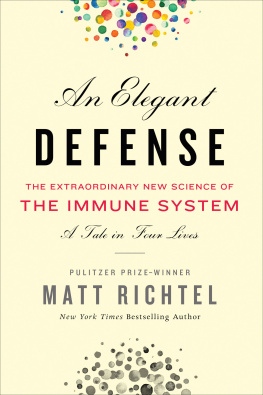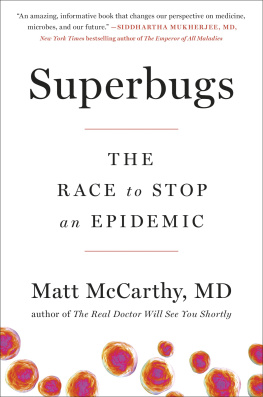PROLOGUE
A RE YOU COMFORTABLE, REGGIE?
Yep.
Reggie Shaw lies on a medical bed, his head inches from entering the mouth of a smooth white tube, an MRI machine. Hes comfortable, but nervous. He doesnt love the idea of people peering into his brain.
Next to the machine stands a radiology technician in blue scrubs, her hair pulled tightly into a bun. She scans the room to make sure there are no errant pieces of metal. The MRI, with sixty thousand times the strength of the earths magnetic force, is a kind of irresistible magnet. A small pair of scissors, if accidentally left out, could be sucked across the room into the tube at forty miles an hour.
Reggie, twenty-six, has removed his clothes and left outside his keys, and the iPhone he keeps so regularly in his left front pocket it leaves a faint outline on the jeans. With his head at the edge of the machine, he wonders whether the permanent retainer on his bottom teeth, the product of a particularly nasty clash in a recreational football game in high school, could get yanked through his head. The technician, Melody Johnson, assures Reggie hell be okay.
She walks to the left of the machine and from a table lifts an odd-looking helmet, a cross between something that might be worn by an astronaut and Hannibal Lecter.
Im going to place this over your head. She fits the white helmet over Reggies face, clipping the sides down to the bed. Inside the helmet, theres a small mirror. Images can be projected into it in such a way that Reggie, lying flat on his back, stuffed in the tube, will be able to see them.
The hum of the whirring machinery is so loud that Reggie wears earplugs. The MRI works by sending massive amounts of magnetic energy into the persons body. This excites hydrogen atoms, which are in heavy concentrations in water and fat. As the atoms begin to settle back down from their briefly excited state, they give off a radio frequency, not unlike that of an FM station. Then the computer picks up the signal and translates it into physical imagesa map, or topography, of the inside of the body. The technology isnt great for looking at hard structures, like bone, but its extraordinary at imaging soft tissue, like organs. Its an unprecedented tool for looking at the brain.
When Reggie was little, he dreamed hed play college basketball, or maybe coach. Hed have a family, for sure, but not just for its own sake; jock though he might have been, he was a romantic who wanted to fall in love, and to be in love. He hoped most of all to go on a Mormon mission. Then, one rainy morning in September 2006, while Reggie was driving to work on a mountain pass, life took a tragic, deadly turn. There was an accident, or so it seemed. Maybe it was just a moment of inattention, or something more insidious. Exactly what happened that last day of summer was not yet clear.
Two men were dead, leaving behind extraordinary griefand a mystery. The case attracted a handful of dogged investigators, including a headstrong Utah State Trooper. He became convinced that Reggie had caused the wreck because hed been distracted by his cell phone, maybe texting. He pursued a stubborn probe, a lonely one at first, looking for evidence and proof of Reggies wrongdoing, but discovering only one obstacle after another. And, later, there was a victims advocate, a woman named Terryl Warner. She had survived a terrible childhood, one that toughened her and forged an uncompromising sense of duty she used to pursue justice for the crashs victims.
For his part, Reggie claimed not to remember what caused the crash. Then, as the evidence emerged, Reggie denied it, deceived himself, and was reinforced in his denial and deception by his most loving friends and family. Some members of the community, while sympathetic to the victims, couldnt understand the fuss. So what if hed looked at his phone, or textedhavent we all been distracted behind the wheel? Who knew that was so wrong? The law was no help: Nobody in Utah had ever been charged with such a crime.
The accident became a catalyst. It spun together perspectives, philosophies, and livesthose of Reggie and his advocates, and Terryl and the other pursuers, including, ultimately, prosecutors, legislators, and top scientists. It forced people to confront their own truths, decades-old events, and secrets that helped mold them and their reactionsin some cases conflicted and in others overpoweringto this modern tragedy.
And this maelstrom of forces left behind a stark reality. The tragedy was the product of a powerful dynamic, one that elite scientists have been scrambling to understand, even as it is intensifying. It is a clash between technology and the human brain.
Broadly, technology is an outgrowth of the human mind. It is an extraordinary expression of innovation and potential. Modern-day machines serve us as virtual slaves and productivity tools. The value of such technology is inarguable in every facet of lifefrom national security and medicine to the most basic and intimate, like the way far-flung family and friends are nurtured and connected through miniature, ubiquitous phones; email that travels thousands of miles in seconds; or Skype and FaceTime. Fundamentally, the extraordinary pace at which consumers adopt these programs and gadgets is not the product of marketing gimmicks or their cool factor but because of their extraordinary utility. They serve deep social cravings and needs.
At the same time, such technologyfrom the television to the computer and phonecan put pressure on the brain by presenting it with more information, and of a type of information, that makes it hard for us to keep up. That is particularly true of interactive electronics, delivering highly relevant, stimulating social content, and with increasing speed. The onslaught taxes our ability to attend, to pay attention, arguably among the most important, powerful, and uniquely human of our gifts.
As Reggies story unfolded, it illuminated and contributed to a thread of science dating to the 1850s, when scientists began to measure the capacities of the human brainhow we process information, how quickly, and how much of it. Prior to that time, the conventional wisdom was that people could react instantly. The idea was that the human brain was infinite. Machines began to change that thinking. Compared to, say, guns or trains or the telegraph, peoples reaction times didnt seem so instant. Technology was making us look slow. But it was also allowing scientists to study the brain, creating an interesting trade-off; machines highlighted the limitations of the brain, threatened to stress our processing power and reaction time to the breaking point, but they also allowed scientists to understand and measure this dynamic.
Then, around World War II, modern attention science was born, also prompted by peoples relationships to technology. A generation of pioneering researchers tried to figure out how much technology pilots could handle in the cockpit, and tried to measure when they became overloaded, and why. Or why radar operators, looking at cutting-edge computer displays, were sometimes unable to keep up with the blips that showed Nazi planes.


